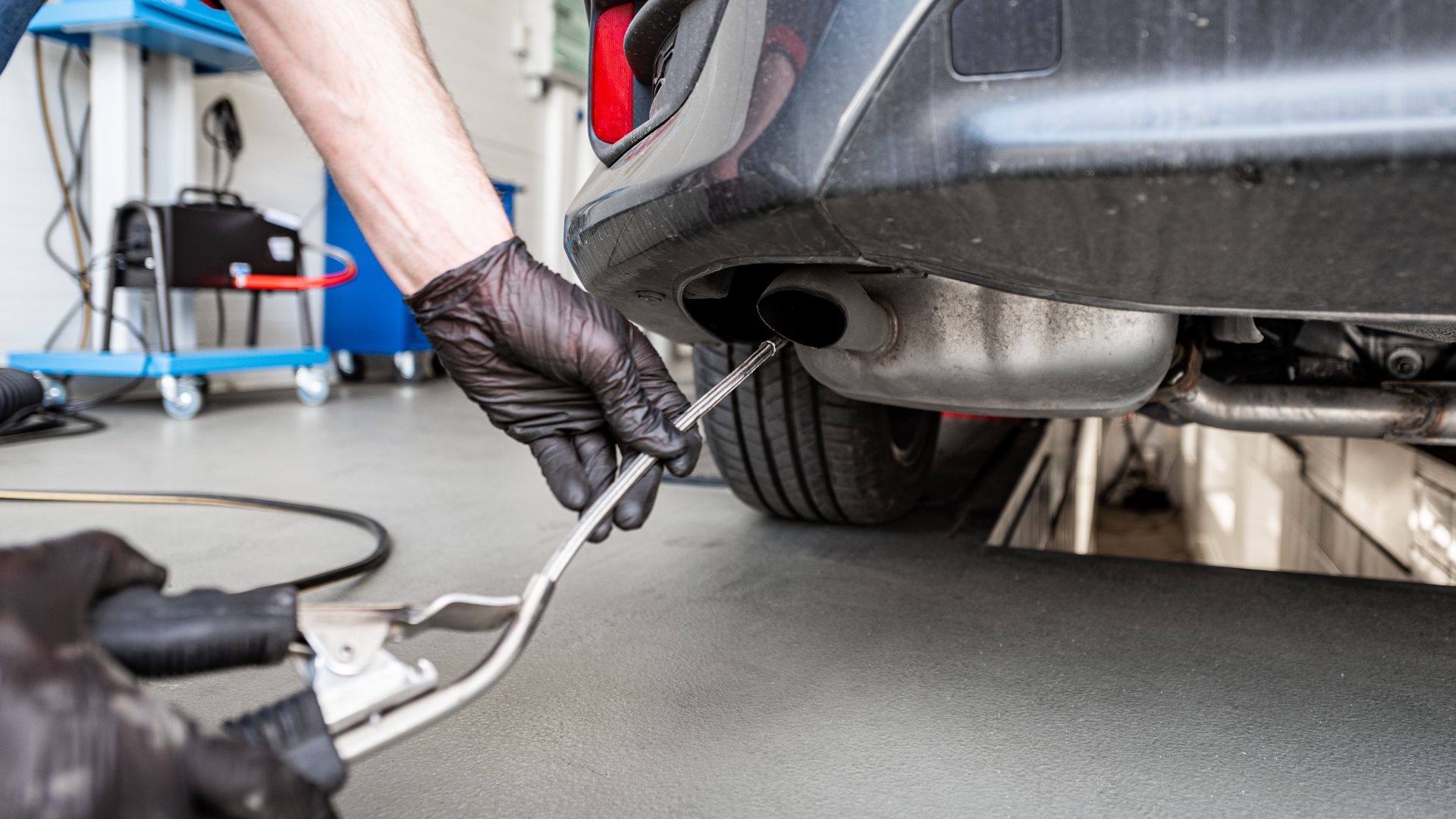Honda emissions system problems — causes and fixes
Uncover issues with Honda's emissions system.

Emission system problems of Honda vehicles result from oxygen sensor failures or simple catalytic converter problems. The emission system of a Honda reduces the number of harmful pollutants emitted into the atmosphere. Any problem with the emission system causes an increase in the emission of these pollutants.
As Honda manufacturers updated the Honda Pilot engines through the years, new failure modes were introduced to their emission control systems. Several second-generation Honda Pilot emission system problems arise from their cylinder-deactivation hardware that lets the engine shut down one bank of three cylinders in low-power demand driving. The third generation issue comes from its direct fuel injection system. In this article, we will discuss the emission system problems of Honda.
What does an emission system problem mean in a Honda Pilot?
A severe problem in an engine’s emission control system can trigger the onboard computer to log a fault. An emission system problem alert will accompany this problem on a Honda Pilot, which informs the driver that there is something wrong by illuminating a warning light on the dashboard. These warning lights only show cryptic symbols.
A warning light can be triggered for many reasons, so you will need an OBD-II scanner to get more information about the specific issue. Enhancements such as variable cylinder control (VCM) and direct fuel injection add to the efficiency of the Honda Pilot’s engine. Still, they also add extra layers of complication and failure points to Honda’s emission control system.
What are the causes of the emission system problem in Honda models

Some common causes of emission problems in Honda models include leaking exhaust, bad oxygen sensors, faulty cylinder deactivation systems, faulty catalytic converters, and bad fuel injectors.
- Leak in the exhaust system: A leak in the exhaust system can let harmful gases get into the cabin of the vehicle, and this can be extremely dangerous for the passengers. It can also cause the engine to run inefficiently, causing an increase in emissions.
- Faulty oxygen sensors: The oxygen sensor monitors the level of oxygen in the exhaust gas. A bad oxygen sensor can cause an increase in the emission of toxic pollutants.
- Clogged air filter: A clogged or dirty air filter can block the airflow to the engine, causing it to run slowly and increasing harmful emissions.
- Faulty cylinder deactivation system: A fault in the cylinder deactivation system will have knock-off effects, indicating an emission control fault.
- Faulty catalytic converter and fuel injector: A faulty catalytic converter can cause an increase in emissions. This is possible because the catalytic converter converts harmful exhaust gases into less harmful ones.
On the other hand, a damaged fuel injector can cause the engine to run lean, which leads to an increase in emissions.
Emission system problem on 2017 Honda Pilot
A faulty oxygen sensor is the most prevalent cause of the emission system problem indicator on a 2017 Honda Pilot model. The oxygen sensor regulates the exhaust gases coming out of the engine. If it notices that the emissions are very high, it will cause the warning light to illuminate.
Other causes of emission system problems in the 2017 Honda Pilot include a faulty air-fuel ratio sensor and a catalytic converter. You can resolve most of these problems with a simple adjustment or repair. Although if the issue doesn’t get fixed, it can result in more severe problems like engine damage.
Emission system problem on 2018, 2019, and 2020 Honda Pilot
Stalling, poor acceleration, hesitating, and rough idleness are all symptoms of emission system problems in a Honda Pilot. The check engine light will get illuminated, and you will most likely fail an emission test. There are some causes for this issue. One of the primary causes is a faulty catalytic converter.
The catalytic converter is responsible for converting harmful gases into less harmful ones before they get released into the atmosphere. If it gets faulty, the toxic gases will build up and cause an emission system problem. The catalytic converter will have to get replaced before it causes further harm.
Another possible cause of an emission system problem in the 2018-2020 Honda Pilot models is an issue with the oxygen sensor. The oxygen sensor measures the amount of oxygen in the exhaust fumes and relays the information to the vehicle’s computer. If it isn’t functioning correctly, the computer cannot adjust to the appropriate air-fuel mixture, which can lead to an emission system problem.
The final cause of an emission system problem is a leak in the hoses, pipes, or components associated with the exhaust system. This causes the engine to run lean, which usually indicates insufficient fuel mixed with the air, resulting in an emission system problem.
Emission system problem on 2021 Honda Pilot?
Catalytic converter issues are one of the most prevalent causes of a Honda Pilot check engine light illuminating. The converter operates to transform harmful emissions from the engine into less harmful ones before they leave the exhaust system. When they don’t function properly, it can cause an increase in emissions.
If you are experiencing this issue, it is essential to take your vehicle to a mechanic immediately, so they can quickly diagnose and fix it. If you choose to drive with a malfunctioning catalytic converter, it can damage other parts of the vehicle and will eventually cause a decrease in fuel efficiency. In some scenarios, it can cause engine failure.
Emission system problem on 2022 Honda Pilot?
A damaged fuel injector control is a significant cause of an emission system problem in a Honda Pilot. The fuel injectors may not receive the appropriate amount of voltage, or they may leak. This causes the engine to run too lean and results in an illuminating check engine light.
Can you drive with an emission system problem?
If your vehicle reports an emission system problem but still operates smoothly, the chances could be that it switched to its “limp-home” mode, which causes reduced performance and impaired drivability. However, the system could protect the engine from damage if there is any indication of a misfire; it is best to pull over and contact a towing service.
Driving with a misfire can cause further damage to oxygen sensors and catalysts. There is an additional complication when the third-generation Honda Pilot faces an injector failure because it promptly locks the transmission in third gear and illuminates the instrument cluster with transmission and engine warning lights.
How to fix an emission system error on a Honda Pilot?
There is no simple fix for an emission system problem on a Honda Pilot. Some errors are relatively easy to repair, while others, like VCM problems and faulty fuel injectors, are left for trained technicians. The following are guidelines for resolving an emission system error.
1. Inspect the sensors and actuators
If the emission problem is related to an actuator or a sensor, it can be easily replaced by the driver. Engine and oxygen temperature sensors are affordable and easy to access. If an OBD-II scan displays an error code for one of the sensors or actuators as a culprit, you can easily replace it.
It is crucial to reset the Honda Pilot emission check system alert through the scanning device when you are through with the replacement.
2. Check for VCM problems
Regular mechanics cannot efficiently resolve VCM problems because it is difficult to access the VCM unit in the rear cylinder head. The intake manifold has to get dismantled completely to access the VCM unit. It is best to leave the fix for a professional mechanic to handle.
3. Inspect for wiring harness fault
It can be tricky to trace emission system problems if the errors result from an issue within the wiring harness. The Honda Pilot’s wiring harness is equipped with eco-friendly soy-based insulation. If rodents get access to the insulation, they will eat it and leave you with a magnitude of repair that a professional mechanic should handle.
Our take
Suppose you experience an emission system problem in your Honda Pilot; it indicates a problem with the vehicle’s emission control system. This can be caused by a minor issue like a clogged air filter or a more severe issue like a faulty oxygen sensor.
It is essential to visit a professional mechanic if you are experiencing an emission system problem so they can quickly diagnose and fix the issue. If you delay resolving the problem, it could lead to potential engine damage.
Can I drive with an emission problem?
It isn’t safe to drive with an emission problem because it typically indicates an imminent issue that can cause severe damage.
What does the emission systems problem mean?
An emission system problem means a vehicle’s emission control system is faulty, and the car is polluting the environment beyond federal standards.
How much does it cost to fix an evasion control system?
The cost of fixing an emission control system depends on the precise cause of the problem. However, the repair cot usually ranges from $200 – $700.
How do you fix engine emission warnings?
The easiest way to fix an engine emission warning is by driving your vehicle and letting the warning light turn off. If the warning light doesn’t go off after three days, you turn your car on and off three consecutive times before the light goes off.